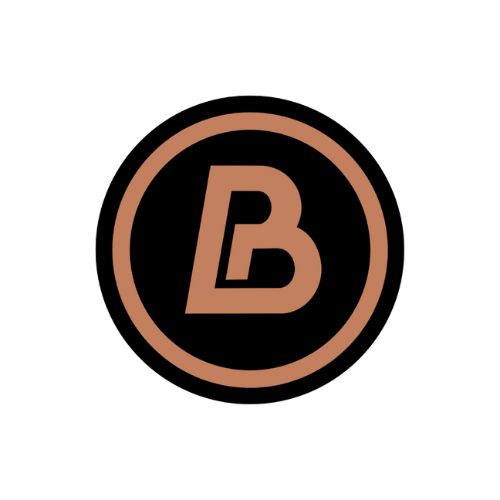
The Psychology of Great Digital Design: What Makes People Click
Why do some websites feel instantly trustworthy while others make you hit the back button without thinking? It's not luck — it's psychology. Great digital design isn't just about looking good; it's about influencing behavior. Every color choice, button shape, and image placement quietly guides visitors toward an action — whether that's making a purchase, booking a service, or subscribing to your newsletter. Understanding the psychology behind these design decisions can transform your website from a static brochure into a powerful conversion machine.
The First Impression Effect
Within the first 50 milliseconds, visitors decide whether they trust your site. That's faster than a blink. People subconsciously judge how professional, safe, and credible your business feels — all before reading a single word. A clean layout, clear headlines, and organized spacing make your site easier to process. Clutter, on the other hand, signals chaos and cheapness. Think of it like walking into a restaurant: crisp menus, balanced lighting, and a welcoming atmosphere set the tone long before you taste the food. Online design works the same way — and Atlanta users, surrounded by creative brands, can tell instantly when a business cuts corners.
Color Theory: The Emotional Trigger
Colors speak faster than words. Blue evokes trust and calm (why banks love it), red creates urgency and excitement (great for sales), and green signals balance and growth (perfect for eco-friendly or wellness brands). But the key isn't picking random favorites — it's consistency. A site that blends five competing colors looks noisy and disorganized. Strong brands choose one or two main colors and build contrast around them. For instance, a bold orange "Book Now" button on a clean white background instantly stands out. At Pixel Bargain, we often tweak color palettes for clients and watch conversion rates jump simply because users' eyes now know exactly where to go.
Contrast and Visual Hierarchy
Good design directs attention. That's where contrast and visual hierarchy come in. High contrast — dark text on light backgrounds, or vice versa — improves readability and focus. Hierarchy, meanwhile, ensures the most important elements stand out: the call-to-action button should visually outweigh secondary links, and headlines should clearly define each section. Many small business sites fail because everything looks equally loud. When every word screams for attention, users tune out. Smart designers use size, color, and spacing to build a rhythm that guides the eye naturally down the page.
Trust Signals: Proof That You're Legit
No matter how pretty a site looks, people still want reassurance. That's where trust signals come in — visual cues that say, "We're real." Customer testimonials, Google review badges, SSL padlocks, and professional photography all boost credibility. Atlanta businesses that showcase local recognition ("Featured in Atlanta Journal-Constitution" or "Serving Midtown since 2012") instantly gain authenticity. Even subtle elements — like consistent typography or a clear "About Us" section with real photos — build emotional trust. When users feel safe, they click more confidently, and that's the heart of conversion design.
Good vs. Bad Landing Pages
Let's take a simple example. Imagine two local coffee shops with websites. Shop A has a clean homepage: a large hero image showing steaming cups, one clear headline ("Atlanta's Favorite Morning Brew"), and a bright "Order Pickup" button. Shop B crams everything together — flashing banners, mixed fonts, and three competing buttons. Visitors feel overwhelmed, not inspired. The first site quietly says, "We're professional and reliable." The second shouts, "We're trying too hard." At Pixel Bargain, we often run A/B tests for clients, and even a 10% improvement in clarity can raise conversions by 30% or more.
Micro-Interactions and Emotional Design
Those tiny animations when you hover over a button or see a progress bar fill up? Those are micro-interactions, and they're more powerful than most people realize. They provide feedback — confirming to users that their clicks or actions are being recognized. When done right, they add delight and fluidity. A button that slightly bounces or changes color upon hover feels more "alive." Emotional design also comes into play — visuals and motion that trigger feelings of joy, curiosity, or satisfaction keep users engaged longer. It's why subtle scroll effects or animated icons make websites feel modern rather than static.
Design Psychology Meets Marketing Performance
The ultimate goal of design isn't just aesthetics — it's behavior change. Sites that follow psychological principles tend to have lower bounce rates, higher engagement, and stronger conversion numbers. Visitors stay longer because their brains feel comfortable navigating the experience. Every scroll, click, and form submission happens more naturally. When design aligns with human instincts — not against them — marketing performance improves across the board. We've seen this firsthand at Pixel Bargain: simple redesigns using hierarchy and contrast routinely double lead generation for Atlanta clients.
How to Apply These Principles to Your Own Site
You don't need a full redesign to start using design psychology. Begin with these quick wins:
- Simplify your layout — fewer choices mean faster decisions
- Pick one strong accent color and use it for calls-to-action
- Add 2–3 trust signals (reviews, certifications, testimonials)
- Use real photos of your team, not stock images
- Test hover states and animations to make your site feel interactive
Small, mindful tweaks add up to big improvements in user behavior.
The Takeaway
Great digital design isn't about trends — it's about empathy. When you design with your audience's emotions, expectations, and instincts in mind, your website becomes more than a digital storefront. It becomes an experience that earns trust and drives action. At Pixel Bargain, we help Atlanta businesses turn that understanding into measurable growth. Because when your design connects with people on a psychological level, every click feels natural — and every visit counts.
